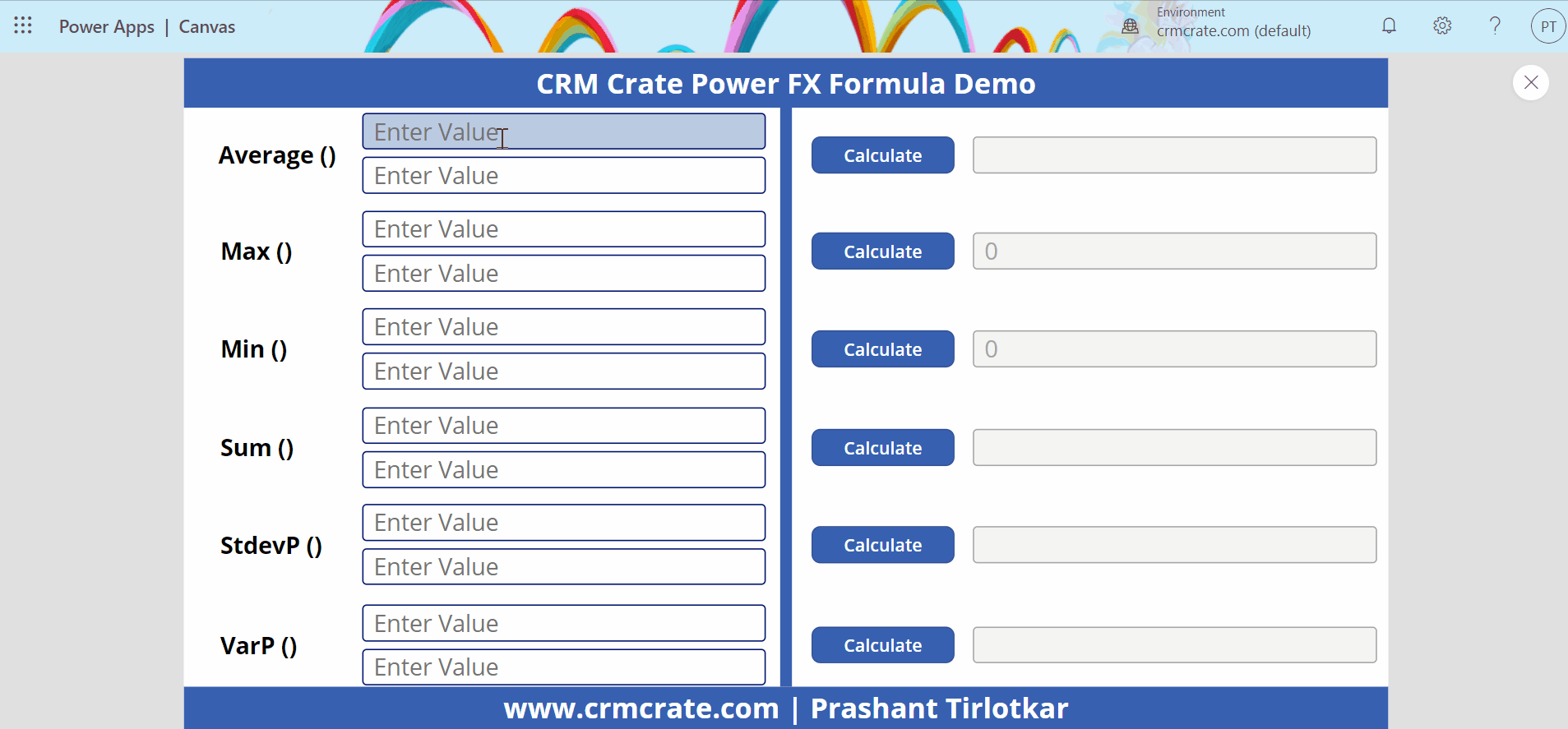We will learn to perform aggregate operations using Power FX formula in Power Apps. Before we start, make sure to subscribe to CRM Crate so that you can stay up to date in the field of Power Apps.
What is Power FX?
Microsoft’s Power Fx is the low-code language that will be used across Power Platform. It’s a strong-typed, general-purpose, declarative, and functional programming language. Power Fx is expressed in user-friendly text. It’s a low-code language that citizen developers & makers can work with directly in an Excel-like formula bar or Visual Studio Code text window.
It enables a complete range of development from no-code for those who have never programmed before to “pro-code” for the seasoned professional, with no learning or rewriting cliffs in between, enabling diverse teams to collaborate and save time and expense.

Understanding Average() function
Average (NumericalFormula1, [NumericalFormula1, ….])
The Average function calculates the average, or arithmetic mean, of its arguments.
Average (2,3)
The result will be “2.5” according to the concept of averaging.
Understanding Max() function
Max (NumericalFormula1, [NumericalFormula1, ….])
The Max function finds the maximum value.
Max (2, 211)
The result will be “211” according to the concept of maximum numerical weightage.
Understanding Min() function
Min(NumericalFormula1, [NumericalFormula1, ….])
The Min function finds the minimum value.
Min (1,2)
The result will be “1” according to the concept of minimum numerical weightage.
Understanding Sum() function
Sum (NumericalFormula1, [NumericalFormula1, ….])
The Sum function calculates the sum of its arguments.
Sum(2,4)
The result will be “6” according to the concept of summation.
Understanding StdevP () function
StdevP (NumericalFormula1, [NumericalFormula1, ….])
The StdevP function calculates the standard deviation of its arguments.
StdevP (22,33)
The result will be “5.5” according to the concept of standard deviation.
Understanding VarP () function
VarP (NumericalFormula1, [NumericalFormula1, ….])
The VarP function calculates the variance of its arguments.
VarP (55,66)
The result will be “30.25” according to the concept of variance.
Implementation of the above given Power FX formulas in Power Apps
The above Power FX formula implementation is demonstrated in the below given animation.






